
By David C Forman, president Sage Learning, Author: Fearless HR
WHY SHOULD YOU CARE?
Tapping on intrinsic motivation of people can have a tremendous impact on overall organization performance and enable people to work more meaningfully and productively. If these qualities are genuinely embedded in the workplace, the data suggest that the impacts on people will be significant.
Answers may be hiding in plain sight. To learn more, it is important to leverage more than 30 years of research on workplaces that lead to productive, engaged, committed and energized employees. These findings show that by improving the workplace, the workforce can flourish, thereby driving improved business results.
Consider what we know from just several sources:
- Dan Pink in “Drive” (2014) identifies the primary intrinsic motivators of autonomy, mastery, and purpose.
- The top three reasons people leave companies have remained consistent for over two decades: 1) poor relationship with direct manager, 2) little opportunity to grow and develop and 3) lack of meaningful work that makes a difference. Because of the Pandemic and related pressures, this list must now include flexibility (to accommodate different ways of working) and well-being (to help insure personal health and balance).
- The Gallup twelve questions remain relevant and meaningful twenty years after their first unveiling. These questions revolve around the workplace, relations with colleagues and bosses, opportunities to use strengths, and clarity of expectations.
- Doshi and McGregor (2015) identify three characteristics of high-performing cultures: play, purpose, and potential.
- Bersin (2014) characterizes the Simply Irresistible Organization as: irresistible work, great management, fantastic environment, growth opportunities, and trust in leadership.
- HCI (2017) highlights the importance of purpose, growth opportunities, flexibility, personal balance, and collegial networks in improving engagement and performance.
- Zak (2017) has identified the following eight management behaviors that generate trust and lead to high performance: Recognize excellence, provide challenging assignments, enable people to have discretion in how they do work, encourage job crafting, share information broadly, intentionally build relationships, facilitate whole-person growth and show vulnerability.
- Goffee and Jones (2013) have described the qualities of the best workplaces: let me be myself, tell me what is really going on, magnify my strengths, make me proud I work here, make my work meaningful and don’t hinder me with stupid rules.
These studies, unlike popular coverages of best places to work, do not focus on perks such as having a dry cleaner at work or even compensation packages. They all address intrinsic motivators that enable people to work more meaningfully and productively. If these qualities are genuinely embedded in the workplace, the data suggest that the impacts on people will be significant.
- Purpose: People want to belong to an organization that provides meaning to others. They seek significance and a higher purpose, and value beyond a paycheck. Conley refers to this as moving from ‘a job to a career to a calling.’ Organizations should have multiple bottom lines, not just a P&L statement.
- Job Contribution: The line of sight between a person’s job and the organizational goals and outcomes it generates must be clear and direct. If a job is seen as uninteresting and a commodity, employee commitment and engagement suffer. Create job impact statements (JIS) that show how each job contributes to the success of the organization.
- Growth Opportunities: Skills and experiences are the new currency in the marketplace. People want to sharpen their skills and become better candidates for their next job, either within the organization or elsewhere. Learning has become a survival skill, given the amount of change and discord in the world. Consider focusing on “learning velocity” as perhaps the most significant skill for an uncertain future.
- Flexibility and Choice: Provide choices, options, and flexibility for people to make their own decisions. Provide different work options for employees to utilize. If possible, focus on what gets done, not where it occurs. Open up opportunities for all to participate and contribute, such as crowdsourcing innovation, or bureaucracy busting suggestions. When people make their own choices, they begin to act like owners.
- Collaborative Networks: People want to collaborate with colleagues, build a sense of community, and grow their professional network. This becomes a huge source of personal growth and enables the organization to learn from its successes and mistakes. As work becomes more and more a team sport, the relationship among colleagues is paramount. Buckingham and Goodall (2019) report that more than 80% of work done in medium, to large organizations is done in teams, but yet teams go largely unrecognized.
- Meaningful Touchpoints and Recognition: It is extremely difficult to keep connected in a fast-changing world. But simple formal and informal steps can have a major impact on performance. Have frequent huddles—not meetings—to keep teams informed and working together. Recognize effort and excellence performance as they occur. Even simple words of appreciation can mean a great deal.
- Personal Balance: This has been a time of incredible tension and stress. Energy, attention, and will are all exhaustible resources. We must find ways to rebound, rejuvenate and replenish be making better use of time, talent, and energy. Some quick suggestions: 30 minute meetings, 20 minute morning walk outside, no appointments before 10 am, monitor your own time, and check e-mail just twice a day.
- Embracing Culture: Every person’s contribution should be respected and valued. A vibrant culture is diverse, inclusive, collegial, reciprocal, and based on trust. But it should also be anchored in accountability, where people hold themselves accountable to team members and for business results. A great culture therefore is part “Peace corps and part Marine corps.”
- Serendipity: Have some fun at work. Who says that work must be boring, and dull? Think about ways to incorporate fun, quirkiness and unconventional approaches. Some examples: new product idea bake off, company garden, employee film festival, and roast the leaders lunches.

Each of these qualities, reinforced and nurtured by a culture that values reciprocity, trust, and transparency, leads to what Gary Hamel has called an “opt-in organization—one in which people want to come to work and are proud to be associated with (Hamel and Zanini, 2020).
Companies that achieve this opt-in status are on average 40% more productive than their counterparts who did not (Mankins and Garton, 2017).They all address intrinsic motivators that enable people to work more meaningfully and productively. If these qualities are genuinely embedded in the workplace, the data suggest that the impacts on people will be significant. Each of these qualities, reinforced and nurtured by a culture that values reciprocity, trust, and transparency, leads to what Gary Hamel has called an “opt-in organization—one in which people want to come to work and are proud to be associated with (Hamel and Zanini, 2020). Companies that achieve this opt-in status are on average 40% more productive than their counterparts who did not (Mankins and Garton, 2017).
Another observation about this list is that the same qualities are mentioned time and time again. And most of the characteristics are not particularly surprising. It is, however, important to note that just because quality like ‘the value of developmental opportunities’ makes common sense; it does not mean it is common practice. There is a huge difference. In fact, it is easy to take for granted findings that are seemingly apparent. We think they exist but they don’t. The key is to make the familiar seem strange or different; then, there is a higher likelihood of fostering change.
So the real answer to the question posed in the title of this article is: There are no secrets of high-performing organizations. The findings and insights are there for all to see.
We just have to act differently.
…
Meet the author at the upcoming Talent@Work Forum
Written by: Dave Forman
Culture Employee Engagement Employee Experience Leadership
Previous post

- 287
labelArticles today2022.02.23.
The pandemic has taught us to be closer to our people: Five key predictions for 2022
Farai Mugabe, Content & Research, The HR Congress WHY SHOULD YOU CARE?Growing employee apathy calls for business leaders to invest in people-centric experience. HR should step up and take up [...]
Similar posts

labelArticles today2024.07.24.
AI-Powered HR: Strategic Benefits and Practical Applications

labelArticles today2024.06.24.









Post comments (1)